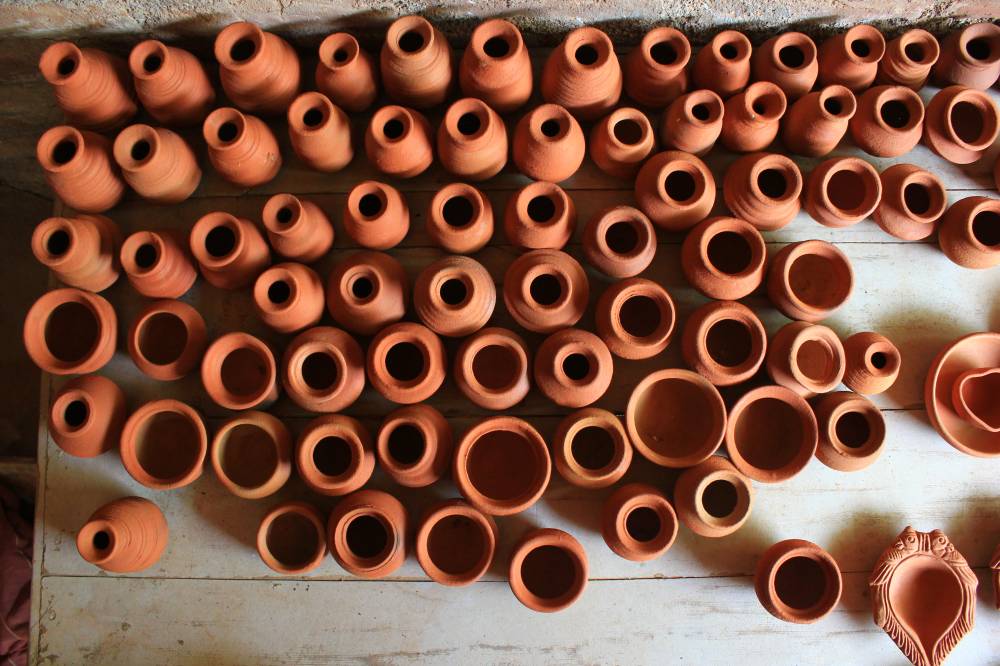
24 Aug How A Potter’s Tale Took Shape
by V. Geetha
A Potter’s Tale had its beginnings in a lunch. The Tara Books team had repaired to DakshinaChitra, a museum of living spaces and crafts, located on the outskirts of the southern Indian city of Chennai. Wandering through the various work and art spaces, we stopped to watch the resident potter, Ramu Velar at work. Expert fingers kneaded clay into an array of shapes. And as he sat at the wheel, we were fascinated by how eye and hand worked together in unison. We were convinced that there was a book in there.
Of the many titles that we have published over this quarter century, books featuring tribal and folk art outnumber all others. The artists that we have worked with come from different traditions, spread across the country, but there are almost none from southern India. Seeing Ramu Velar at work, we realised that this part of India might not have living traditions of art, but there were artisanal traditions that could furnish visual content for illustrated books.
We let the idea sit for a while, before we acted on it. We knew the curators and others who worked at DakshinaChitra. We had worked with the institution in the past: used its library when we did research on tribal, folk and the popular arts, our books were on display in the museum’s bookstore, and we had held a week-long workshop with Gond artists in the premises. This had, in fact, led to the making of some of our classic titles, including The London Jungle Book and One, Two, Tree!
When we approached Deborah Thiagarajan at the museum and discussed our plan for a book on Ramu Velar, she was happy with the idea. We told her that we did not intend to disturb the museum’s working routine. We wanted to be able to see Ramu in his everyday context, at work in his studio and shop. This was where he had his clay, either wet or dry, and where he made his objects. This was also where his wheel was… we hoped to talk to him as he worked, while also taking photographs of his work process.
Ramu Velar at the wheel
We were not sure if Ramu would be comfortable with our proposal, and were grateful when he agreed to talk to us. He turned out to be a wonderful raconteur and it soon became evident that we ought not to worry over much about our questions. We just needed to follow the drift of his story-telling and it would all be revealed to us, in the course of time.
As he fashioned a lamp or a ladle — and spoke to customers who stopped by at his little shop to buy a pot or a decorated urn — he would turn to us, with an observation on the task at hand, an explanation of why he had made something this way and not that. Some days he was quieter than others. He would want us to watch him at work, and on such occasions, we waited for his words. We relished his rich, idiomatic Tamil, and his expansive sense of his life and craft — he had captured us with his story-telling skills. On days that the museum was closed to visitors, our conversations were longer, and that was when we got to know him better.
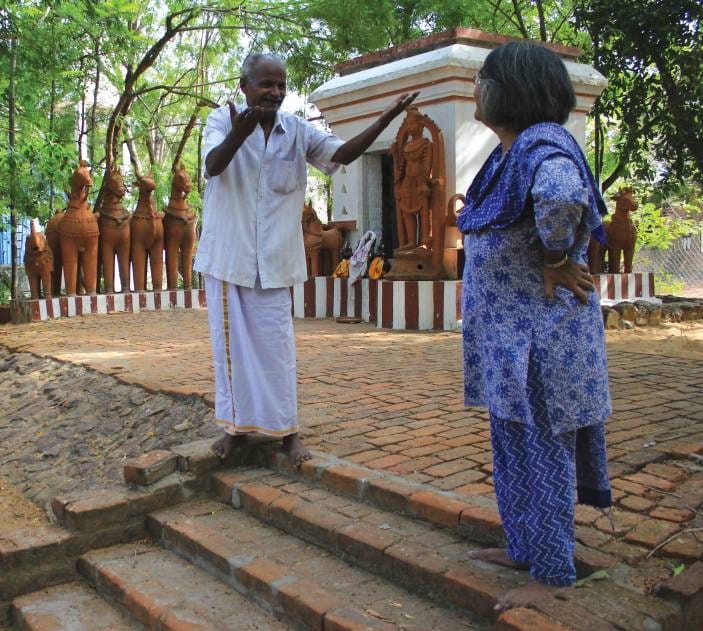
The book’s translator V.Geetha in conversation with Ramu Velar
It was during one such day that Ramu walked us around the museum grounds, and stopped at specific sites to narrate a tale, or share a memory. Sitting outside a temple, he mused over his disinterest in formal religion, but confessed he had been drawn to the songs and poetry of Vallalar, a 19th century mystic. This was when he burst into song, of his own accord, and we were transfixed by his intensity. Thereafter, he took to singing, whenever he felt like it, sometimes stopping in mid-sentence to catch a melodic verse. Well into the middle of our conversations, he decided that something more was needed to cement our growing friendship: he gifted us with a small, round pot with a decorated lid, which he assured us was good for storing curd.
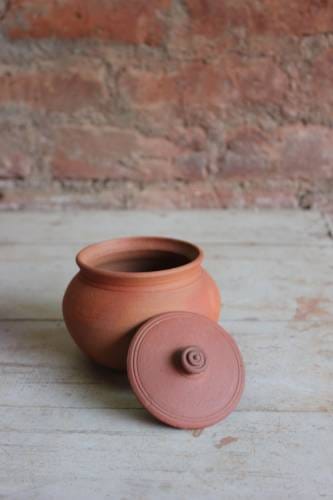
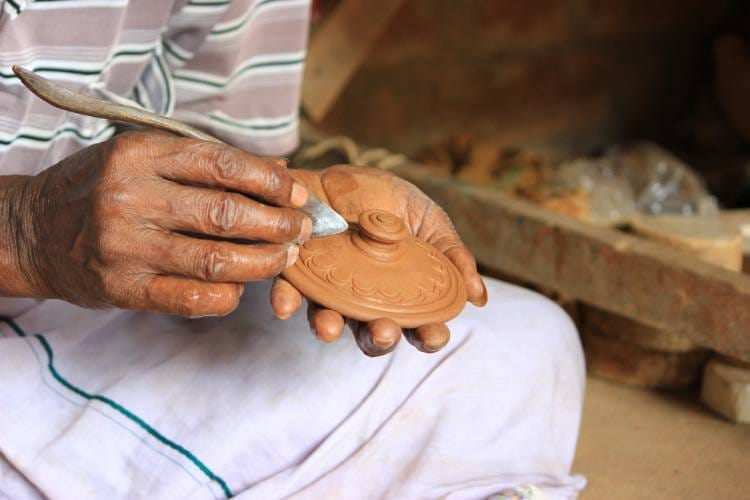
A pot for storing curd and Ramu decorating a lid by hand
All through this time, we took photographs of the place, the man and his wares. We were not sure what visual shape the book would take, but it soon became clear that we perhaps needed other illustrative elements, besides the photographs of the studio, shop and Ramu. For instance, how were we to visually recreate Ramu’s memories of childhood?
And as often happens, we were inspired by another project that we had begun but could not complete. This had to do with toy-makers in Mexico. Some of us had visited the country, and got acquainted with different folk art and craft traditions and practitioners. We even made a short film on the subject of toys and their makers, as a prelude to a book on Mexican toy traditions
For various reasons, we could not pursue this project. But meanwhile, we remembered the toys and toy makers we had seen on that visit. One particular toy-maker, a visually challenged craftsman, had made this beautiful self-portrait out of clay, and gifted it to us. We wondered if we should not have Ramu create clay objects, of people, things, miniatures of his own on-site work… and use these to illustrate his words?
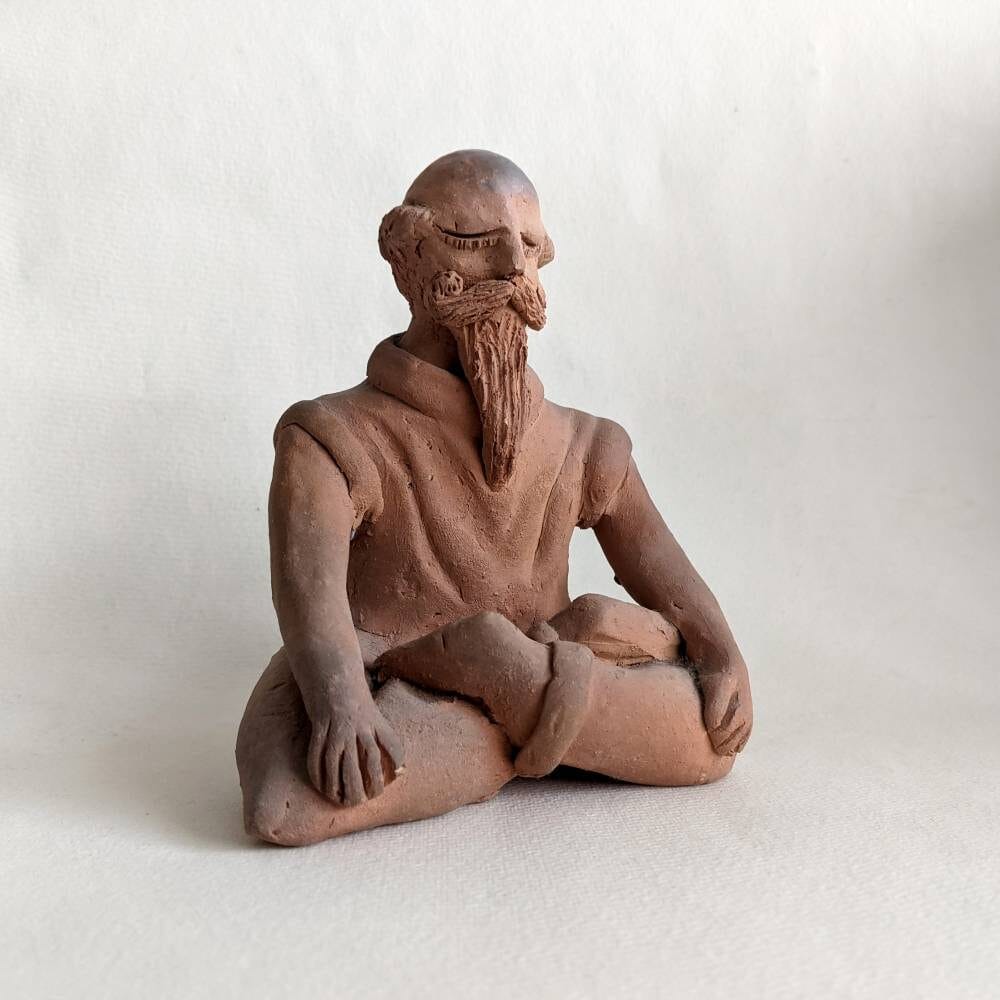
A Mexican toy-maker’s self-portrait in clay
Ramu was amused by what we wanted, but got to work. We gave him a wishlist of objects, based on what he had referenced in his interviews. We had listed those that could be made to stand in for his household, people, moments in his life, the wares he talked about… he added some of his own to this lot. Finally we had a carton of objects — images of men, women, animals, houses, plants, trees, things from the past that were no longer in use… While working on each of these, Ramu paused and recalled a specific detail, or a memory that came back to him. On some days, he fished out an old photograph to show us why he had made an object the way he did.
We were struck by his engagement with his craft, his pride in his skill and his commitment to what he termed ‘fine work’— pottery that was not only functional or decorative, but involved the making of objects that required care, skill and a sense of beauty and proportion. We were fascinated by his modest collection of tools, and requested him to lay these out as well, so that they might be photographed too. He also pointed to the objects he had made for the museum, and asked us to take pictures of them. Also of him and his son drying clay, mixing clay and sifting sand…
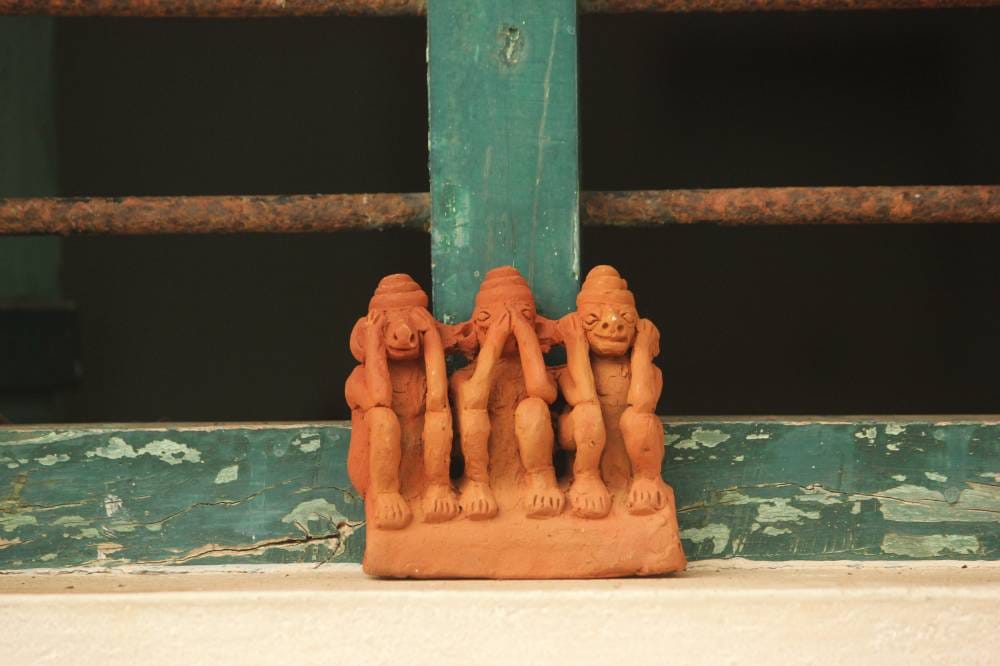
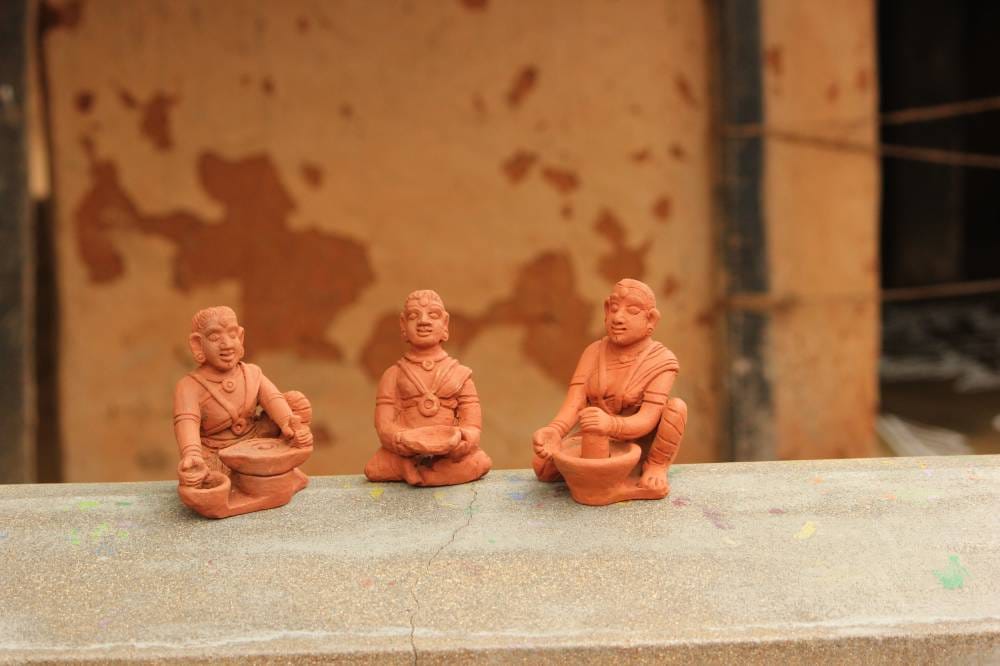
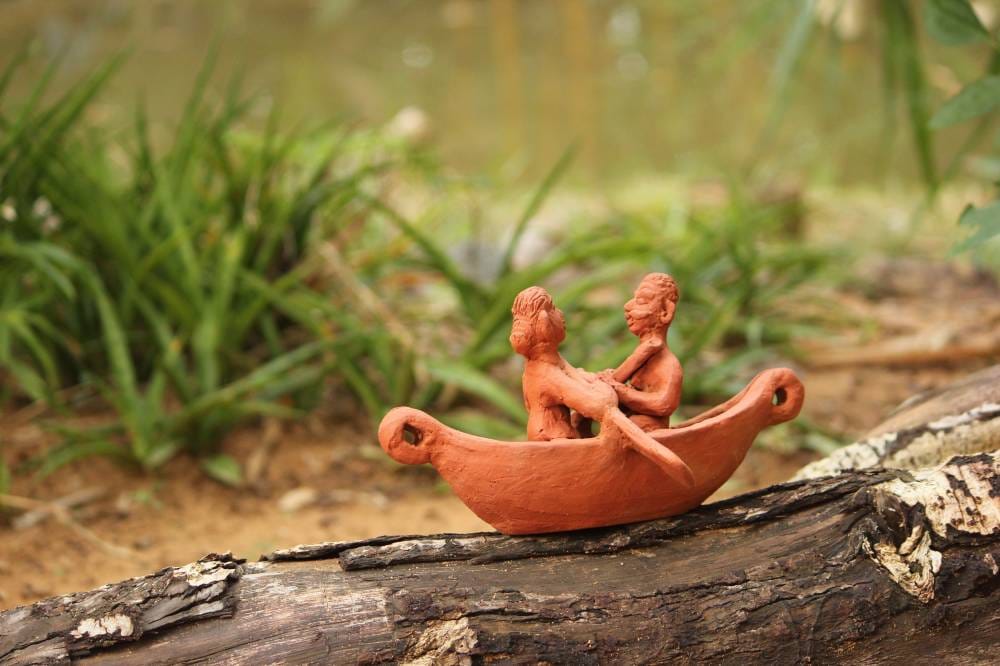
Miniature objects crafted by Ramu Velar
Working or speaking to us, he tended to get reflective and that was when he treated us to Vallalar’s songs that dealt with spiritual striving, about being imperfectly mortal and yet aspiring to be united with something that was sustaining and everlasting. Of these, one was a favourite and it began as an entreaty to the almighty: “What is this close fit between us?” Often, Ramu would greet us with his song, his face puckered into a mischievous smile that said it all.
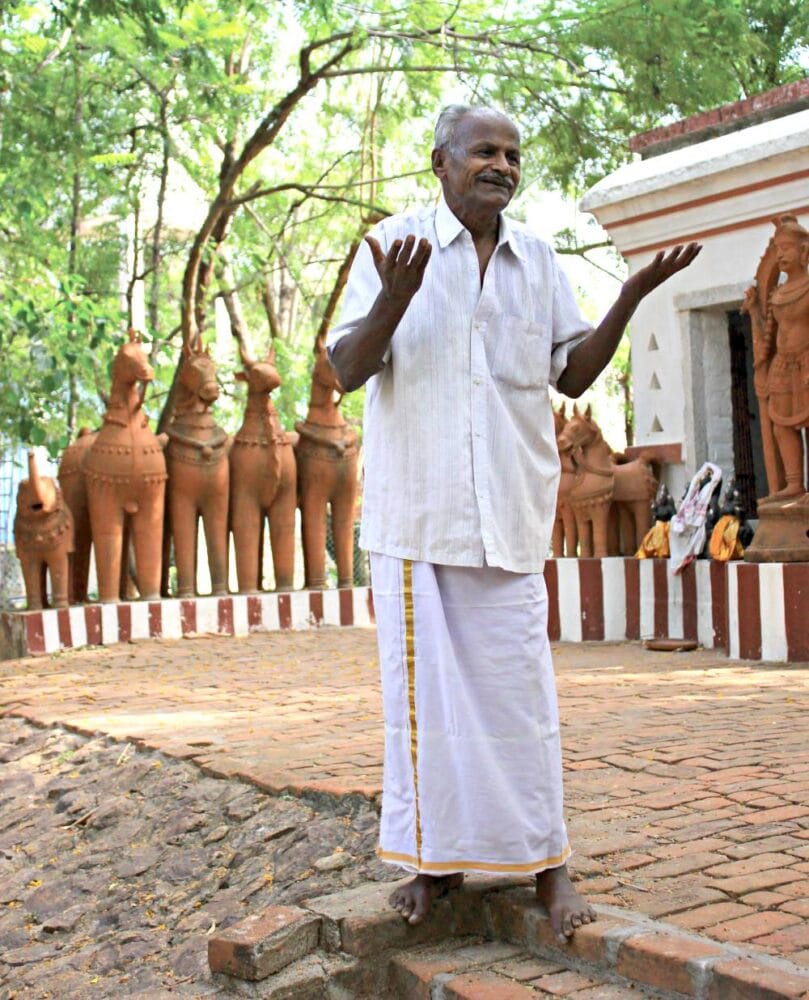
Ramu Velar singing
Once we had the words down, the photographs taken, and the objects wrought, we had to sequence all of these into a meaningful narrative. We had started out with the idea of doing a graphic book, not unlike contemporary non-fiction comics. But in the doing several things emerged as pertinent from the point of view of book design: the photographs were all of a kind, since they were all shot in DakshinaChitra — so we obviously needed more pictures, of mud and clay, images of rural gods, of which many are made by potters, and rural landscapes.
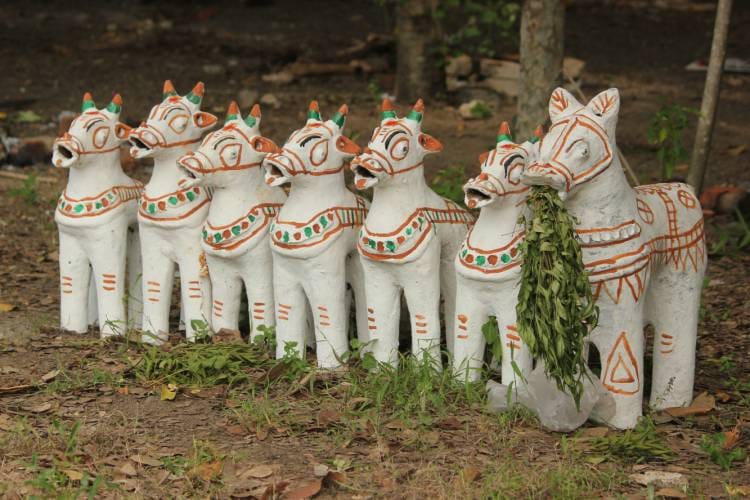
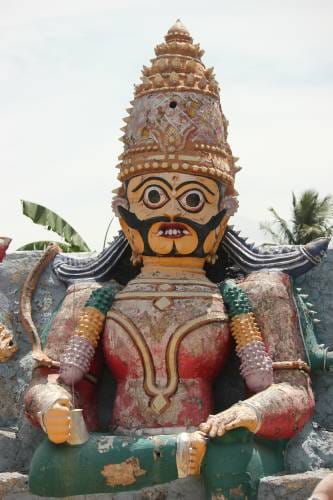
Rural pottery in Tamil Nadu
The second consideration was that the objects we had with us could not be merely photographed and used, but had to be put in conversation with the text and images. And finally, we needed to work out a graphic logic for the text: how would the words sit on the page? How could the layout be layered?
Serendipitously, we managed to get the photos that we wanted. We showed the book in an early stage of design to an old friend, Dr Stephen Inglis, who teaches art and anthropology at an American university. He had done work on southern Indian pottery traditions in the past, and he was delighted that we were doing a book on a potter and his vocation. He sent us some pictures he had taken back in the 1970s, when he was doing his field work. And since that was the time when Ramu was at his most active as a village artisan, we asked him if we could use some of them to suggest another time and place. He agreed.
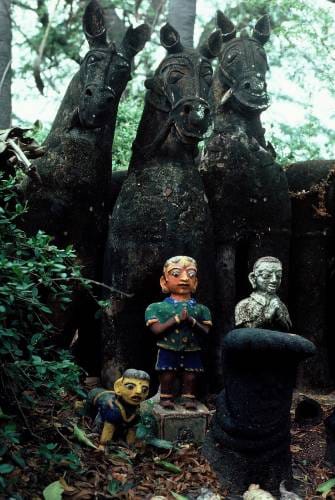
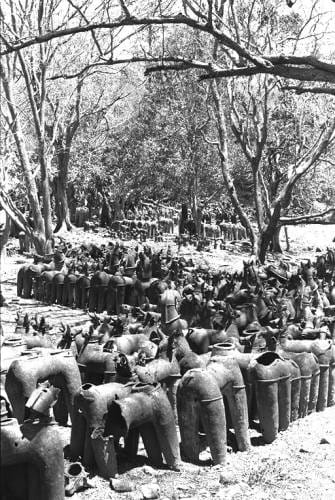
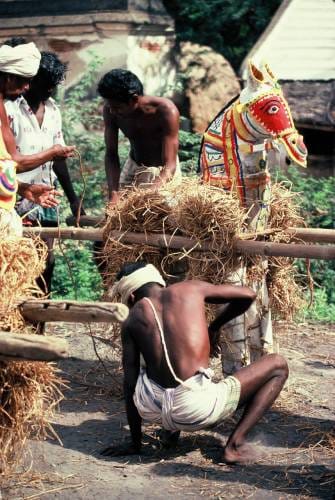
Fieldwork photographs from Dr. Stephen Inglis
We also worked out a logic for text placement. Rather than float the text in bubbles or as one continuous flow, the designers worked out a fine balance of images and text, for almost every page. However when it came to the objects Ramu had made, we were not sure if they worked as illustrations. They helped to supplement the photos of places and people — but the narrative still seemed to lack a link, in a visual sense, which would imaginatively bring all the elements together and create meaning. This was when we decided that we should bring an illustrator into the project. This was easier said than done, since the task was a complex and sensitive one, requiring both skill and imagination. It was two years before we found an artist we could work with: Emanuele Scanziani, who has illustrated several books for us and lives not far away from us. He was inspired by the photos and Ramu’s vision and came up with a set of textured drawings that completed what the words and photos had to say.
The book finally started to come together, and just as we were ready to send it out into the world, a thought struck us. While working on the book, we realised that Ramu Velar had invited us into his working world and shown us how a skilled and gifted maker envisaged and went about his vocation. This was priceless knowledge and not easy to be had. For one, in our historical context, the knowledge that a skilled artisan brought to her or his task is seldom granted aesthetic or even technical value. Often it is seen as comprising repetitive tasks and nothing more. And this view of craft vocations separates artisanship from art, on the one hand, and from modern industrial manufacture, on the other. This means that we never really get to understand and assess ‘making’ on its own terms, and in view of how a maker comes to her or his craft.
This set us thinking and we decided that this book on Ramu Velar would begin a new series of titles called Makers. Making by hand has a long and enduring tradition in India: we wanted to explore how older methods of doing have survived and adapted to new contexts and needs. In this series of books, we want to bring in the persona of the maker, the doing of craft, the dynamism of process, and the vocabulary that guides it.
A Potter’s Tale is a beginning, and an augury of more good things to come. Here’s a small sample of what you can expect:
V. Geetha is a writer, translator, social historian, activist, and a freelance editor and a leading intellectual from Tamil Nadu, India. She has been active in the Indian women’s movement since 1988, organizing workshops and conferences. Geetha has written widely, both in Tamil and English, on gender, popular culture, caste, and politics. Click here to discover Tara Books she has authored.


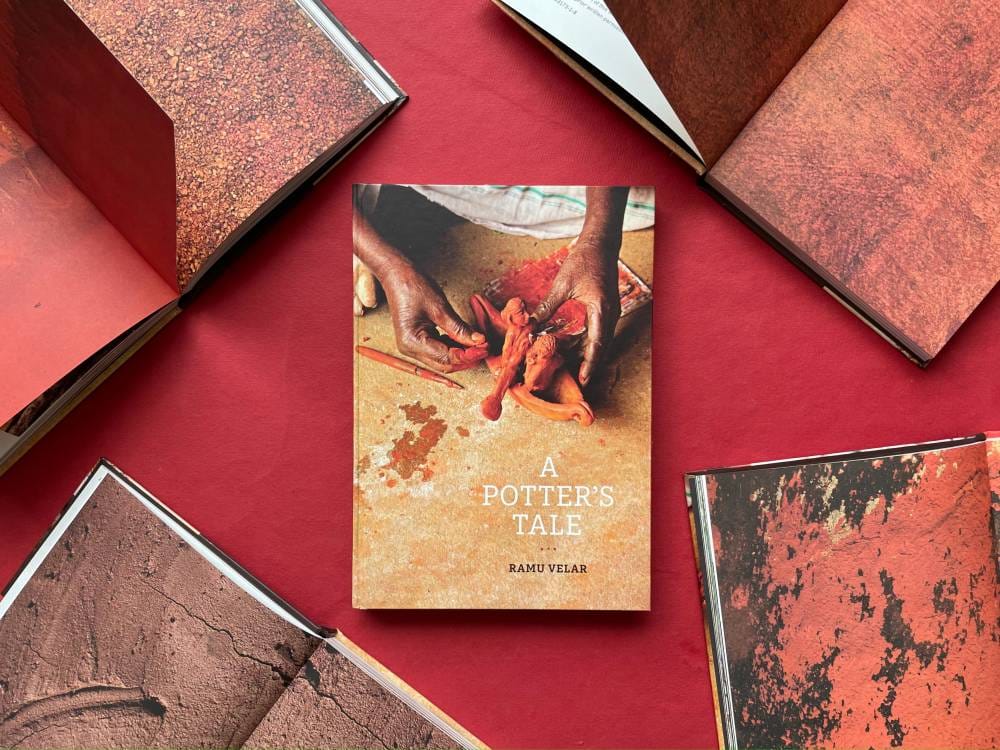

Indrapramit Roy
Posted at 07:38h, 28 AugustWonderful! The brilliant text of the blog whets the curiosity. It looks like the book does take into account both the tangible as well as the intangible elements of our craft heritage. Would be very interested in having the book on Ramu Velar, the master craftsman. Also a glimpse into the purposefulness that goes into the making of such a book. Congratulations!
V. Geetha
Posted at 12:56h, 02 SeptemberThanks, Indra. The book is part of a series, in fact the inaugural title: we hope to examine aspects of craft labour, aesthetics, the world views of crafts persons, the vocabularies of their vocation….
SANDEEP MANCHEKAR
Posted at 08:00h, 09 SeptemberThanks Geetha documenting ghe most ancient craft and thanks to Dakshinachitra providing constant support and platform
Sarah
Posted at 12:54h, 24 SeptemberThank you for this lovely piece of article